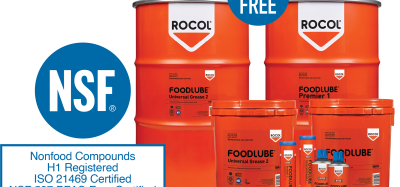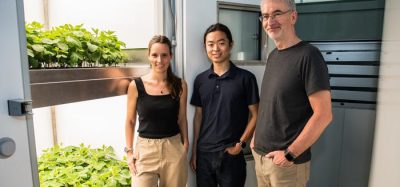A prime example
- Like
- Digg
- Del
- Tumblr
- VKontakte
- Buffer
- Love This
- Odnoklassniki
- Meneame
- Blogger
- Amazon
- Yahoo Mail
- Gmail
- AOL
- Newsvine
- HackerNews
- Evernote
- MySpace
- Mail.ru
- Viadeo
- Line
- Comments
- Yummly
- SMS
- Viber
- Telegram
- Subscribe
- Skype
- Facebook Messenger
- Kakao
- LiveJournal
- Yammer
- Edgar
- Fintel
- Mix
- Instapaper
- Copy Link
Posted: 6 November 2006 | Graeme Jardine, Microbiology Laboratory Manager, RHM Group Ltd | No comments yet
Technological advances in the field of food microbiology are a common occurrence. A great deal of research and validation is put into improving established methodologies and utilising new rapid approaches to isolation and detection. However, established ‘conventional testing’ is still the main stay of most food microbiology laboratories with the age old traditions of putting samples on petri dishes. RHM Technology is one of a small number of UK labs that have employed a high-tech approach to this area of testing, in order to bring improved service level and cost benefit.
Technological advances in the field of food microbiology are a common occurrence. A great deal of research and validation is put into improving established methodologies and utilising new rapid approaches to isolation and detection. However, established ‘conventional testing’ is still the main stay of most food microbiology laboratories with the age old traditions of putting samples on petri dishes. RHM Technology is one of a small number of UK labs that have employed a high-tech approach to this area of testing, in order to bring improved service level and cost benefit.
Technological advances in the field of food microbiology are a common occurrence. A great deal of research and validation is put into improving established methodologies and utilising new rapid approaches to isolation and detection. However, established ‘conventional testing’ is still the main stay of most food microbiology laboratories with the age old traditions of putting samples on petri dishes. RHM Technology is one of a small number of UK labs that have employed a high-tech approach to this area of testing, in order to bring improved service level and cost benefit.
RHM is one of the largest food companies in the UK and Ireland and is home to famous brands such as Hovis and Mr Kipling. Historically RHM Technology’s microbiology laboratory was a small scale operation testing 50-100 routine samples per day for part of the RHM Group. Five years ago a decision was made to centralise a large proportion of the routine testing activities for the group. The lab at High Wycombe in the South East UK was identified as the best site for this with a proposed increase in routine testing capacity to upwards of 600 samples per day.
To this end, solutions were sought as to the best way to accommodate this change in activity. Whilst a direct increase in staff and bench space was perhaps the most obvious route, a more high tech resolution was also considered to create a lab where quality was not compromised at the expense of quantity and where data generated could be easily managed and retrieved.
Solutions were found in the shape of two companies. Lab Vantage was an existing supplier to RHM Technology of Laboratory Information Management Systems (LIMS) and could supply their ‘Sapphire’ software for tracking and management of sample data through the lab, from sample receipt to final Certificate of Analysis. In order to facilitate the testing itself, a Dutch company called Kiestra Laboratory Automation was approached. Their system of work termed ‘It’s The Sample That Moves’ involved the automation of a number of routine lab functions including transport of petri dishes through the laboratory to the various key points in the testing process. A suitable facility was also designed to cope with the increase in sample numbers and associated testing activities. This was to be carried out in compliance with UKAS, ISO 17025 and the various specific standards for individual test methods.
Setting up
We moved from the existing lab the week before Christmas 2001 and after nine months of cramped temporary accommodation we returned to a transformed, state of the art testing facility. The foot print for the lab was increased three fold with large walk-in sample storage areas and incubators and a HEPA filtered air handling system to provide even temperature and air quality equivalent to a hospital operating theatre. The two most significant changes, however, were the LIMS system and the Kiestra system, whose interaction governs the routine testing activities.
Each sample received is entered into the LIMS system with automatic insertion of product details from pack barcodes for the majority of samples. At this stage a unique barcode label is created for each sample and from this point onwards its identity and progress can be tracked at each stage of the testing process. The LIMS system contains pre-set lists of customer details and sample specific ‘suites’ of tests, which are assigned automatically. This information is not only for use when reporting results to a customer, but is also used within the laboratory with key instructions for interpretation by the Kiestra system.
As each sample is weighed, the barcode label is scanned and further ‘stomacher bag’ labels are generated depending upon the number of sub-samples required for specific tests or grouped enumeration tests.
The next stage is an initial dilution of the sample for homogenisation. At this point the Kiestra system begins to interpret information created by the LIMS system. Each weighed sample is scanned, placed on a balance connected to the ‘SynergA/Tracea’ which interprets the information, records the weight of the sample, dilutes with the appropriate diluent for the tests required and records the final diluted sample weight. Any deviations from the expected weights are flagged up on the system and an unsafe result is given, thus allowing repeat preparation of the sample.
Following homogenisation, the diluted sample is passed to one of three ‘Pipetting’ positions. The technicians re-scan the label and further LIMS information is transmitted to the Kiestra ‘SorterA/BarcodA’. This system automatically selects the required pre-poured and empty petri dishes for the tests to be performed; barcode labels each plate, stacks them per sample and delivers them via transport belts to the position from which the sample label was scanned. Each petri dish now has a barcode label, which ensures traceability to an even greater defined level. The technicians then use automated pipetting tools which not only dispense the required volumes into the Petri dishes, but also have a built in dilute function for further serial dilutions.
Pre-poured ‘spread plates’ are passed from this point to the incubators and inoculated empty dishes are automatically transported to the automated plate pouring system (AgarrA). The barcode on each plate is scanned by the machine and a pre-calibrated dose of molten agar is dispensed into each plate. The system then provides an even mix process for the poured plates and stacks them by media type to facilitate easy transport to the incubator.
Each stage exhibits the key requirements of the laboratory, which are standardisation (in terms of consistent treatment), control and traceability. Each stage is logged with a time stamp and the operatives’ ID which allows for rapid audit and trend analysis when potential issues need to be investigated. All batches of microbiology media are produced via pre-set recipes within the Kiestra ‘SolventA’ system with the key stages of media production controlled by pre-set values which lock further steps if out of tolerance. Due to interactions between the Kiestra software, each media batch is logged and the resultant information is transposed into LIMS against the relevant test samples for traceability purposes.
Reading of results and data entry is again facilitated by the LIMS system, whereby results for each plate are entered via barcode scan and calculations are automatically determined by the system. It is then a simple process of reviewing and approving all data generated and allowing the system to generate an automatic Certificate of Analysis in whichever form the customer requires, be it electronic or hard copy.
An additional function of the Kiestra software provides an assessment of the efficiency of the various machines with records of sample numbers, machine operating speeds and a breakdown of any interruptions in operation with diagnosis of the reasons. This allows the laboratory manager to assess performance and plan for future work accordingly.
Advantages
In order to explain the advantages of the system it is best to compare it with a non automated situation. In this case all samples would have to be tracked by use of significant amounts of paperwork with the potential for associated transcription and filing errors. All petri dishes would have to be labelled, organised and transported by hand which again brings considerable room for error and considerable inefficiency. Pipetting of samples and further dilutions would be carried out using pre-dispensed volumes of diluent rather than in line mixing which involves a significant amount of manual media production. Pouring of agar into petri dishes would be done by hand which comes with an increased uncertainty that may affect the results.
Whilst routine testing will always have an element of the production line about it, the automation and electronic handling of the process removes a considerable amount of the more labour intensive functions from the technicians involved, thus allowing greater flexibility for other areas. This has been a great step forward technologically for the laboratory and has also been a significant change in terms of the working culture. We are fortunate to have built a team to whom this type of environment is second nature now and this is key to our success in making this work. Backed up by the technical know-how of Lab Vantage and Kiestra, we do not rest on our laurels and are in a process of continuous improvement and development identifying other appropriate areas where technology can be employed to enhance both service provision and the daily routine of the laboratory personnel. The additional flexibility gained from the system’s capacity means we complement our food safety and quality function, by utilising the technology for research and challenge test work and in our response to food safety investigations raised by our team of food safety specialists.









